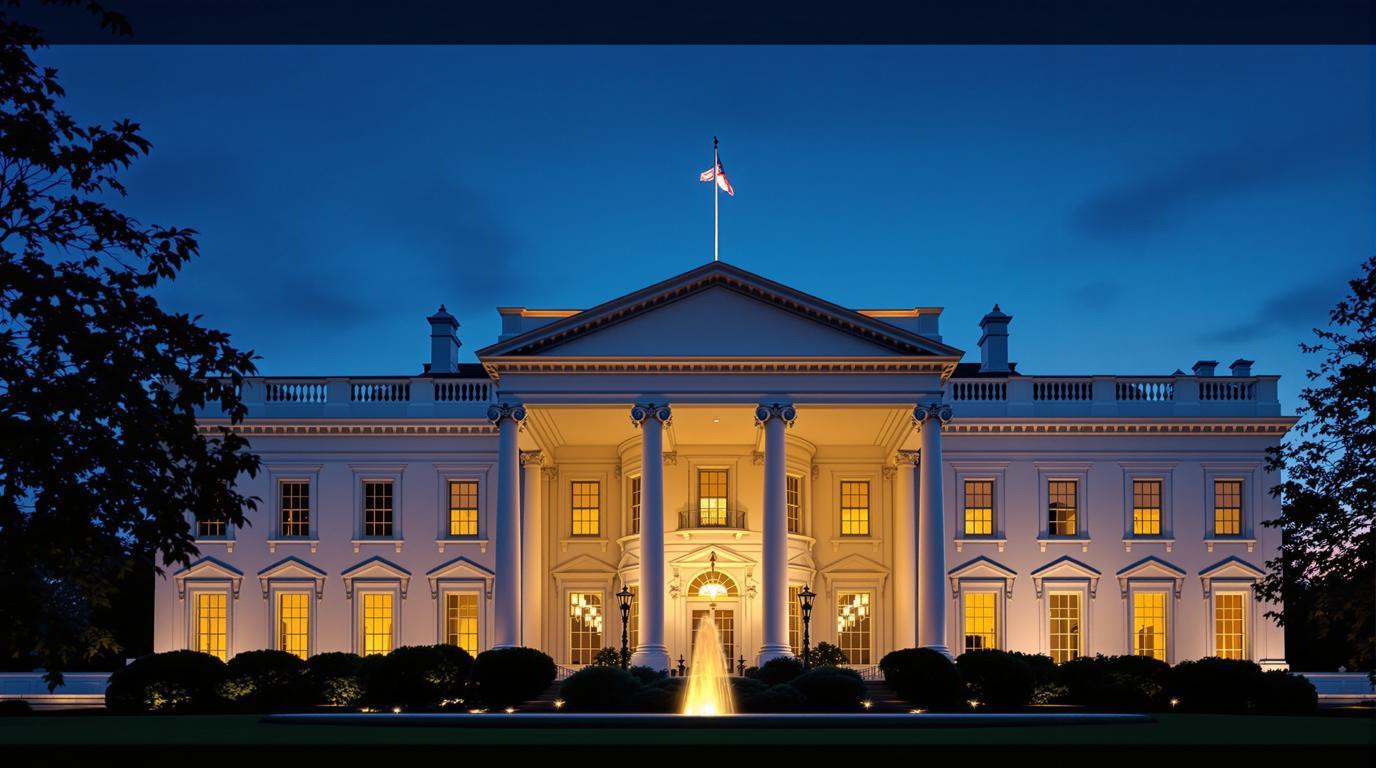In America’s capital, a gleaming neoclassical mansion stands as both the ultimate symbol of presidential power and one of the world’s most recognizable buildings. The White House—or “Maison Blanche” as French visitors call it—welcomes over 100,000 visitors annually, yet behind its iconic columned façade lies a complex blend of living history, working government offices, and carefully preserved American heritage that few truly understand.
The president’s house that survived being burned to the ground
Most visitors admire the White House’s pristine exterior without realizing it rose from literal ashes. During the War of 1812, British forces set fire to the building, leaving only the exterior walls standing. This devastating event could have permanently destroyed America’s presidential residence, much like medieval villages elsewhere that protected their heritage through centuries.
“The White House represents American resilience,” explains Dr. Matthew Harrison, presidential historian. “Its reconstruction after being burned symbolizes our national determination to preserve our democratic institutions despite challenges.”
A working mansion where history happens daily
Unlike static museums, the White House functions as both home and executive office. The West Wing buzzes with political activity while the East Wing and residence maintain domestic tranquility. This duality creates a unique atmosphere where momentous decisions occur in rooms visitors walk through moments later.
The People’s House museum, opened in 2024, offers an immersive journey through presidential life with replica rooms and interactive exhibits. Located just steps from the actual White House, it provides context that enhances the official tour experience.
Secret spaces most tourists never discover
Beyond the formal rooms shown on public tours lies a network of fascinating spaces rarely seen. The underground bunker constructed during WWII, a fully-equipped medical facility, and a bowling alley installed by President Nixon represent just a fraction of the building’s hidden features.
Like hidden villages that guard secrets tourists rarely discover, the White House contains mysteries behind its public persona.
The gardens that rival botanical wonders
The White House grounds feature meticulously maintained gardens that change with the seasons. The Rose Garden, redesigned by Jacqueline Kennedy, displays over 30 varieties of America’s national flower. During spring, the grounds burst with cherry blossoms and tulips in a display that rivals destinations known for their natural wonders.
Where to capture the perfect photograph
Lafayette Park offers the classic north-facing view of the White House, particularly stunning at sunrise when golden light bathes the columns. For a less crowded perspective, the Ellipse to the south provides an equally impressive vista, especially during evening hours when interior lights create a warm glow through windows.
“As a photographer, I’ve documented presidential residences worldwide, but the White House presents unique challenges and rewards,” notes architectural photographer Eliza Chen. “The contrast between its brilliant white exterior and the surrounding greenery creates dramatic compositions in any season.”
A cultural institution rivaling global icons
The White House stands alongside architectural marvels that host cultural performances worldwide. Its East Room regularly transforms into a concert venue where presidential honors are bestowed upon artists and performers, while state dinners showcase American culinary excellence.
The building’s collections include over 500 paintings, sculptures, and decorative arts pieces that rival museum holdings. Each president and first lady leaves their mark through acquisitions and renovations, creating an evolving cultural treasury.
When paradise fits within city blocks
While not a paradise island with height restrictions, the White House grounds follow strict architectural guidelines ensuring this 18-acre compound maintains its historic character. The property features 132 rooms, 35 bathrooms, and 412 doors within its main building, yet maintains a graceful proportion that belies its actual size.
Standing before this living monument to democracy, visitors experience more than a photo opportunity. They witness the continuing story of America’s experiment in self-governance, housed within walls that have witnessed two centuries of triumph and tragedy, crisis and celebration—a legacy that continues to unfold with each passing day.
